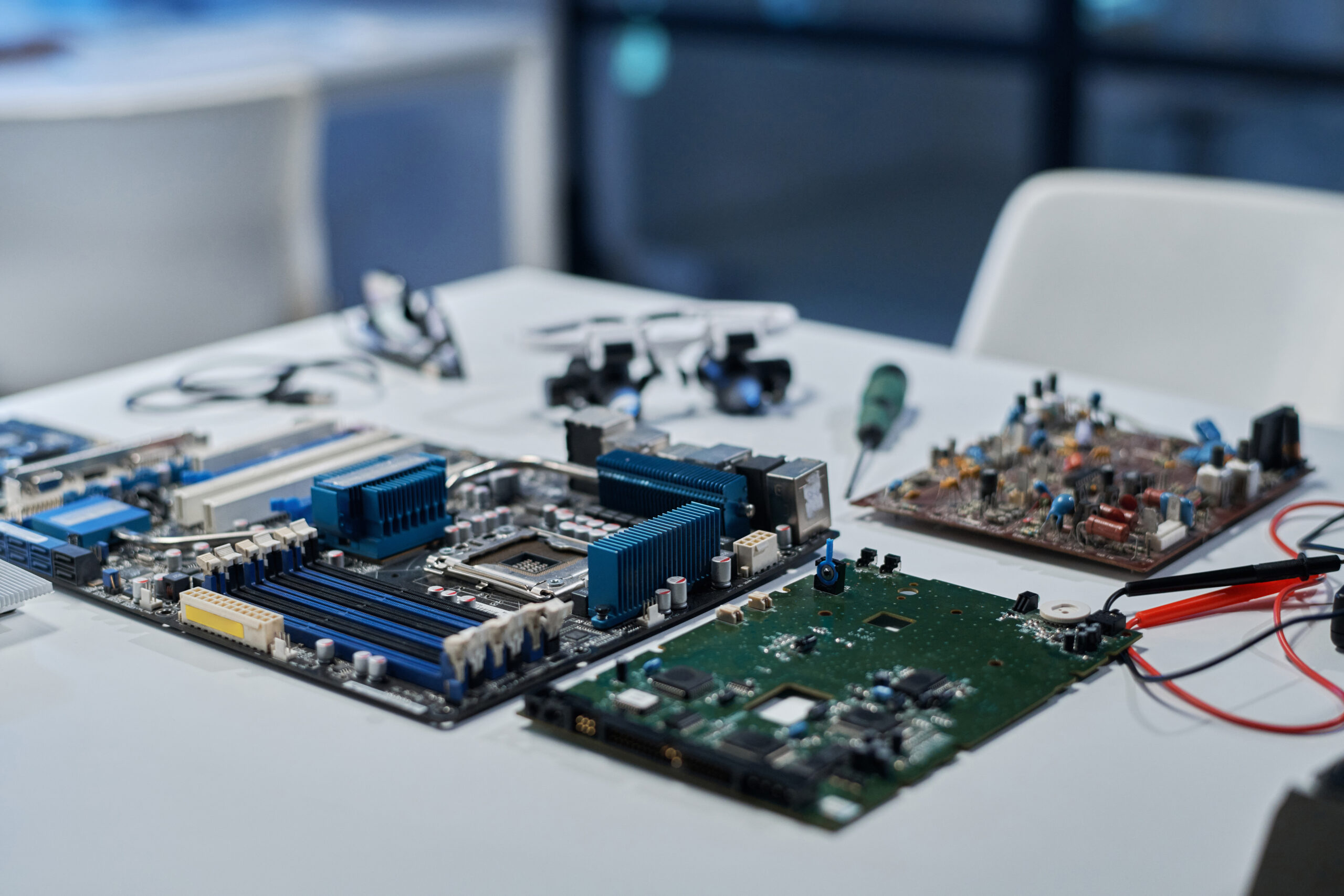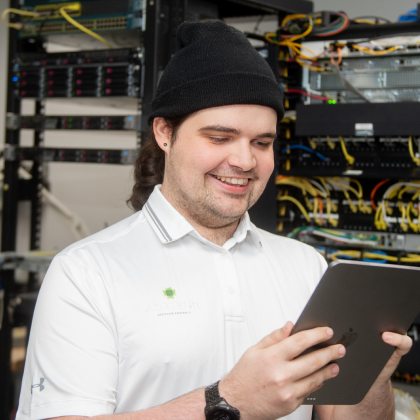Why Secondary Hardware Is Gaining Popularity Among Enterprise Buyers
Enterprises adopting AI and data-intensive applications need high-performing hardware to process the workload faster. However, buying brand-new hardware means high upfront costs, complex setups, and long procurement cycles.
Secondary hardware refers to refurbished, pre-owned, or surplus IT equipment that offers enterprise-grade performance at a lower cost.
In this article, we’ll discuss secondary hardware, the challenges it solves, and why it is gaining popularity among enterprise buyers.
What Is Secondary Hardware?
Secondary hardware is pre-owned, refurbished, or surplus IT equipment that is resold after its initial use. This includes servers, switches, routers, storage systems, and enterprise-grade components that are still fully functional and sold with warranties.
Unlike new hardware, this equipment comes from companies upgrading their systems, overstock liquidation, or lease returns. Reputable vendors inspect, repair, and certify these products to meet enterprise standards, making them a reliable and budget-friendly option.
Challenges Enterprises Face with New Hardware Procurement
Here are some challenges enterprises face when buying new hardware:
- High upfront costs: New hardware requires large capital investment to buy, install, configure, maintain, and support contracts. This can drive up the total cost of ownership (TCO).
- Supply chain issues: Many face supply chain issues like global chip shortages, shipping backlogs, and vendor issues. This disrupts IT rollouts and slows down business operations.
- Compatibility issues: New hardware may not integrate smoothly with existing systems, requiring extra adapters, middleware, or network redesign. This leads to unexpected costs and delays.
- Limited flexibility: You might face strict OEM (Original Equipment Manufacturer) lock-ins, rigid upgrade paths, and non-transferable licenses. Customizing new systems or using third-party parts can cancel the warranty, making it harder to upgrade or adjust the hardware as your needs change.
- Complex setup: New systems often need careful configuration, which can delay deployment or cause errors if not done right.
Why Enterprises Are Buying Secondary Hardware
Here’s why secondary hardware is gaining traction with enterprise IT teams:
Cost-Saving
Refurbished or pre-owned hardware costs less than new equipment. This allows IT teams to manage their limited IT budget, scale infrastructure, upgrade systems, or invest in services. The lower upfront cost also reduces financial risk for short-term or non-critical deployments.
Faster Availability
Secondary hardware is often ready to ship. Unlike new hardware, secondary equipment helps companies avoid long lead times—an issue that became especially clear during the COVID-era supply chain crisis. More recently, the 2024 Taiwan earthquake disrupted GPU and server supply chains from major chipmakers like Taiwan Semiconductor Manufacturing Company (TSMC).
In such scenarios, secondary hardware allows enterprises to source hardware immediately without any disruptions or delays.
Spare Parts for Instant Break-Fix Scenarios
Secondary hardware is a cost-effective safety net for urgent break/fix scenarios. Instead of waiting weeks for manufacturer replacement parts, IT teams source critical components like power supplies, fans, or network cards within days. For proactive teams,stocking up on spare parts for critical components in advance helps minimize downtime and keeps operations running smoothly.
This reduces downtime risk and keeps infrastructure running without blowing up the budget.
Reliable Quality
Reputable vendors thoroughly inspect, clean, and test each asset before resale, often using the same standards as the original manufacturers. Many suppliers also offer solid warranties for long-term use.
Since this hardware is built for demanding enterprise environments, it can handle high workloads over time.
Flexibility and Compatibility
Secondary hardware gives your teams more freedom to build custom setups and integrate with existing systems. You can also avoid compatibility issues and upgrade without voiding warranties or being locked into one vendor’s ecosystem.
Support for Legacy Systems
Enterprises running older systems often need hardware that’s no longer produced. Secondary hardware offers access to discontinued or hard-to-find parts, which helps extend the life of your legacy infrastructure and avoid costly overhauls.
Sustainable IT
Secondary hardware directly supports circular economy practices by keeping IT equipment in use longer instead of sending it to landfills. It helps you adopt sustainable IT practices, reducing the demand for new manufacturing, which saves raw materials, lowers energy consumption, and cuts e-waste.
How Secondary Hardware Supports HPC and AI Workloads
Enterprises that process high-performance computing (HPC) and AI workloads need powerful, scalable infrastructure such as HPC GPUs, servers, and network design. However, sourcing and managing the equipment is expensive.
Secondary hardware helps IT teams meet performance demands in a faster, more affordable way to:
- Deploy custom-built clusters for AI model training, machine learning, or data-intensive tasks
- Extend the life of existing HPC infrastructure through refurbishment and hardware upgrades
- Securely decommission or remarket retired hardware to reclaim the budget and reduce waste
Inteleca offers HPC and AI solutions through custom-built configurations and hardware procurement services for secondary GPU servers, high-density compute nodes, and storage to match your growing workload demand.
Best Practices for Buying Enterprise-level Secondary Hardware
Here’s how enterprises can buy secondary hardware reliably:
1. Plan Your Budget
Before you buy any equipment, it’s important to plan your IT budget to avoid hidden or unexpected costs. You need to consider factors like shipping, installation, configuration, licensing (if applicable), future upgrades, and support costs.
Having a clear budget also helps you prioritize which components to buy new, refurbished, or delayed based on urgency and ROI (return on investment).
2. Work with Experts for Hardware Procurement
Sourcing secondary hardware is only effective if it’s configured correctly. Here’s how partnering with experienced hardware specialists helps:
- You source the right hardware for your network, performance, and compliance needs
- Equipment is pre-configured to your specifications, e.g., firmware, rack compatibility, network settings
- You avoid costly trial-and-error setups or delays caused by incorrect system architecture
Inteleca offers hardware procurement services that include thorough inspections, tests, and configuration of each asset to match your infrastructure needs and budget.
3. Look for Warranty and Support
Always buy equipment that comes with a warranty, ideally one that covers parts, labor, and replacements for a defined period (e.g., 1 year, 3 years, or even lifetime). Reliable vendors will clearly outline what’s covered and how quickly they respond to support requests.
Make sure the warranty includes:
- Hardware replacement
- Onsite vs. remote support options
- Access to technical assistance or setup help
4. Verify Compatibility
Make sure the hardware is fully compatible with your existing infrastructure. This includes power requirements, firmware versions, network protocols, port types, and rack dimensions. If you’re buying servers, check GPU sockets, RAM capacity, and drive bays so they match your performance and scalability needs.
Also, make sure the model you’re buying has upgrade options and that spare parts are readily available in the secondary market. This helps avoid getting locked into hardware with limited flexibility or high future maintenance costs.
5. Align with Your ESG Goals
Your hardware procurement decisions should align with ESG (Environmental, Social, and Governance) frameworks.
Make sure you source from vendors that follow certified refurbishment and disposal processes, such as R2v3 and ISO 14001 for ITAD providers reselling equipment. These certifications show the provider reuses, recycles, and disposes of IT equipment responsibly.
Conclusion
Secondary hardware is a smart way to save costs, ensure quality, maintain reliable performance, and instantly deploy on legacy systems. With certified partners, testing equipment, and flexible procurement options, secondary hardware helps enterprises scale sustainably.
Inteleca follows certified, sustainable processes to refurbish and extend the life cycle of every asset. Schedule a call to learn how we can help you build a reliable, cost-effective, and eco-conscious IT environment.



